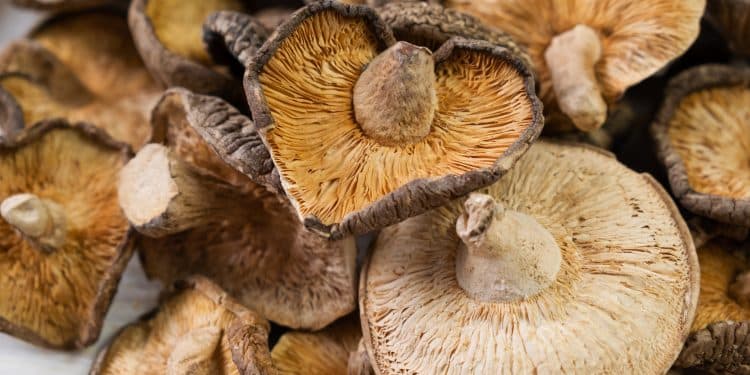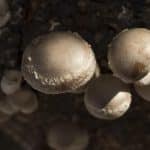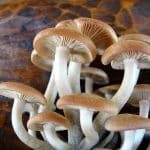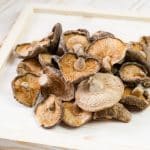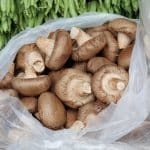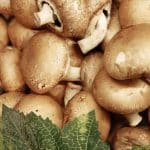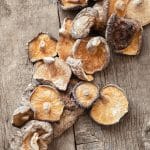Copper is a naturally occurring element and is necessary for a number of body functions. It’s found in a wide variety of foods, and even has trace amounts in your drinking water, making it easy to get adequate amounts into your diet.
The mineral is needed to produce energy, keep blood vessels healthy, and keep your immune system functioning. Copper is also available in supplement form, either alone or included in multivitamins, although most people get adequate amounts from their diet.
Because our bodies naturally excrete any excess copper that we do not need, toxicity from copper is rare. In those cases, too much copper causes stomachaches, extreme thirst, and diarrhea.
You can find our favorite supplements containing Shiitake Mushrooms on the following page of our website to learn more.
Do Shiitake Mushrooms Contain Copper?
As a high-protein fungi, shiitake mushrooms are an excellent source of several essential nutrients, including copper. Shiitake mushrooms, which are native to East Asian cuisine, provide 20% of your daily need for copper in just one cup. However, when cooked, that amount increases to 1,152 micrograms, 128% of your daily need. Other varieties, such as oyster mushrooms, portobello mushrooms, or button mushrooms, have similar levels.
Why You Need Copper in Your Diet
Our bodies cannot make copper on their own, so we have to get this mineral from our food intake. Copper needs increase as you age, but, on average, adults should get 900 micrograms of the mineral each day. Low copper levels are linked to a compromised immune system, which may decrease the ability of your body to fight infections and diseases. Copper also supports your immune system as an antioxidant.
In this role, the mineral binds to the free radicals in our bodies, keeping them from damaging our cells. Free radicals build up in our bodies as a result of aging and lifestyle behaviors. Over time, higher levels are associated with chronic diseases such as diabetes, arthritis, and heart disease.
Our bodies need copper to produce the specific enzymes that are responsible for making connective tissues in our ligaments, tendons, and hearts. These enzymes are also involved in maintaining a strong structure of the blood vessels and supporting the production of bone.
Your brain has some of the highest levels of copper in your body. It uses this mineral for a number of neurological processes. Research shows that copper helps transport oxygen in the brain, as well as combating free-radical cell damage.
It is also needed for making the enzymes that drive neural system functions. This activity includes modulating your stress response, as well as the food amines that breakdown food for energy.
Other Foods With Copper
Copper is found in many foods that are appropriate for all diets, making it easy to reach the recommended amount each day.
These eight foods are particularly high in the mineral. Beef liver contains the highest per-serving amount of copper of all foods. Whether it is braised or grilled, one 4 oz serving contains 16,070 micrograms, which is over 18 times the daily intake. It is such a rich source of copper that sources recommend eating only one serving per week to avoid potential toxic symptoms. Chicken liver is a great substitute, providing 566 micrograms, 62% of your daily need.
Cooked oysters, such as those served steamed or smoked, contain exceptionally high amounts of copper, with 4,800 micrograms in 100 grams served, although raw oysters only have about half of this amount.
If you are not a fan of oysters, you can get most of your daily need for copper from most seafood. For instance, cooked crab contains 663 micrograms and smoked salmon has 228. A handful of cashew nuts could provide nearly all your copper intake for the day at 622 micrograms per ounce, which is roughly 18 nuts. You can eat cashews raw, adding them to both hot and cold dishes, or soak them overnight for a base to make dairy-free spreads, cheeses, and dips.
Many seeds are rich in copper, including sunflower seeds, which have an impressive 519 micrograms per ounce. However, some sunflower seed products contain a higher quantity of added salt, so read labels and temper portions to help lower the health risks associated with a high-sodium diet. A medium-sized baked potato contains approximately 610 micrograms of copper per serving, regardless of whether it is served baked, mashed, or fried. While it brings slightly less copper to the table, sweet potatoes are also a nutrient-dense source of the mineral, with 120 micrograms in a comparable-sized serving.
While you need to temper sugar and calories, treating yourself to a dark chocolate bar could meet your entire days requirement of copper. When it comes to the nutritional content of chocolate, darker is better.
Per 100 grams of chocolate, 70-85 percent of dark chocolate contains 1766 micrograms of copper, while 60-69 percent contains 1248. Although significantly lower, milk chocolate still has 491 micrograms in a similar serving.
Tofu is an excellent source of protein, as well as other nutrients, like calcium, that are typically lacking in plant-based diets. With 398 micrograms of copper in just one 100-gram serving, it also adds around 44% to your daily need for copper.
Learn more:
